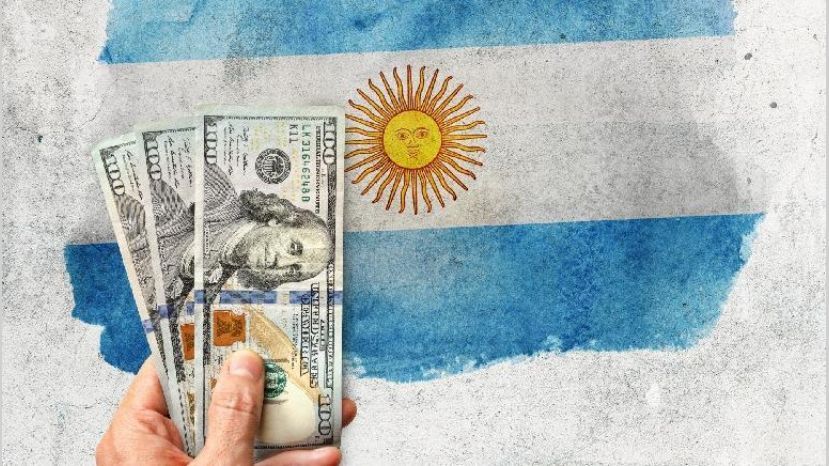RIO DE JANEIRO, BRAZIL – In Argentina, the dollar is a savings instrument and a thermometer that reflects how the economy and politics are doing. When the peso depreciates sharply, Argentines know that turbulence is coming, especially significant price increases.
The US currency was sold this Wednesday at 104 pesos in the official market, but its price in the informal circuit reached 185. This exchange rate gap gives rise to all kinds of financial maneuvers that impact the Central Bank’s reserves: so far in October, it has had to sell nearly 200 million dollars to meet the demand and support the peso.
The Government of Alberto Fernandez seeks to maintain the exchange peace at least until the legislative elections of next November 14, and to achieve this with the least possible drain on reserves, it is betting on tightening, even more, the controls on the purchase and sale of foreign currency.
Read also: Check out our coverage on Argentina.
The first of the measures enacted this week focuses on importers, who request dollars at the official exchange rate to pay for goods purchased abroad. This Tuesday, the Central Bank of the Argentine Republic (BCRA) decided to modify the advance payment agency for some imports after detecting that payments for a higher value than incoming goods have been recorded since June.
“The measure ordered by the BCRA only applies in cases in which imports are being made for a higher value than that which has been entered, so it affects 13% of imports. The measure will be in force until October 31 and seeks to balance payments with the goods entered into the country”, announced the agency.

In June, there were imports of US$5.6 billion and payments of US$5.9 billion; in July, the difference was another US$300 million, in August, US$800 million, and in September, US$400 million more.
In addition to the over-invoicing of imports, a common practice in Argentina in times of significant exchange rate gap (it allows companies to access dollars at the official exchange rate, much lower than the “parallel” rate), there is also the interest of importers to pay as soon as possible to ensure the current exchange rate and not to be at the mercy of a potential post-election devaluation.
The second measure is linked to financial operations in the foreign exchange market. The significant difference in the dollar’s value in the official market and the parallel market favors the appearance of numerous stock market maneuvers with which to obtain profits. For this reason, the National Securities Commission imposed on Tuesday new limits to stop the upward pressure of the last weeks, which forced the Central Bank to intervene daily with dollar sales.
The stock exchange agency established a limit of 50,000 nominal per week to sell negotiable securities denominated in dollars and issued under local law with settlement in foreign currency. Those who want to buy ‘MEP dollars’ (as the operation resulting from the purchase of bonds in pesos that are then sold in dollars is known) will have to declare that they did not trade bonds under foreign law or other assets against dollars in the last 30 days and commit not to do so in the following 30 days.
“This resolution is issued in coordination with the BCRA and the Ministry of Economy, to contribute to a prudent management of the foreign exchange market, reduce the volatility of financial variables and containing the impact of fluctuations in financial flows on the real economy, within the framework of the current economic policy,” said the CNV.
The new restrictions are added to a long list of previous ones, among which stands out the restriction to the savings dollar, one of the most common mechanisms among Argentines to protect themselves from the numerous devaluations of the peso and the high inflation (51.4% interannual).
In September, the Central Bank lost reserves for almost 3.3 billion dollars due to the payment of more than 1.8 billion dollars to the IMF and the permanent intervention in the exchange market. It was the worst month for the Argentine monetary authority’s coffers since September 2020 despite having much more restrictive controls than a year earlier.
The lack of inflow of dollars from agricultural exports after the harvest always puts pressure on the value of the national currency at this time of the year, but so does the greater availability of pesos derived from the increase in government spending the proximity of the elections.

